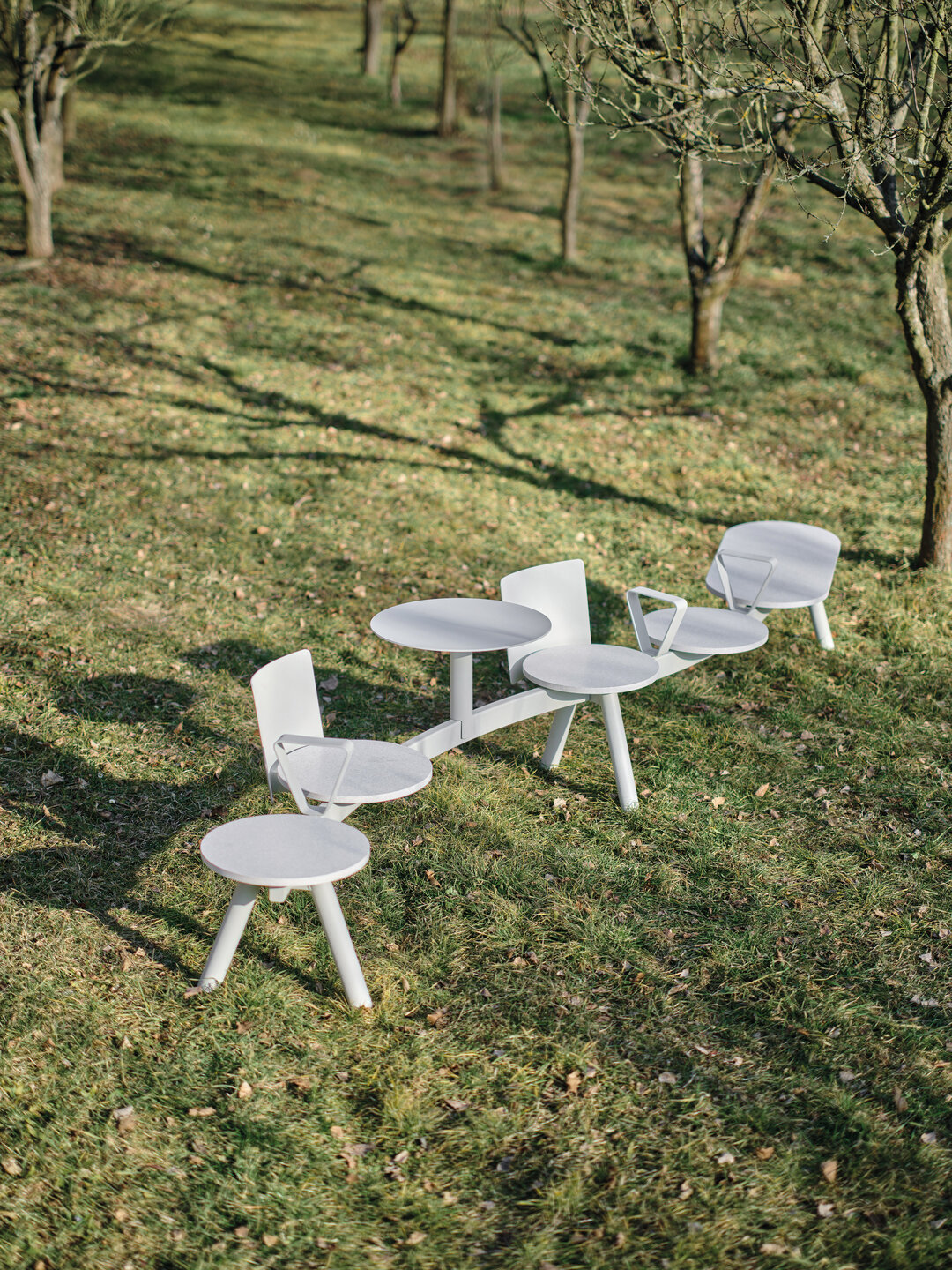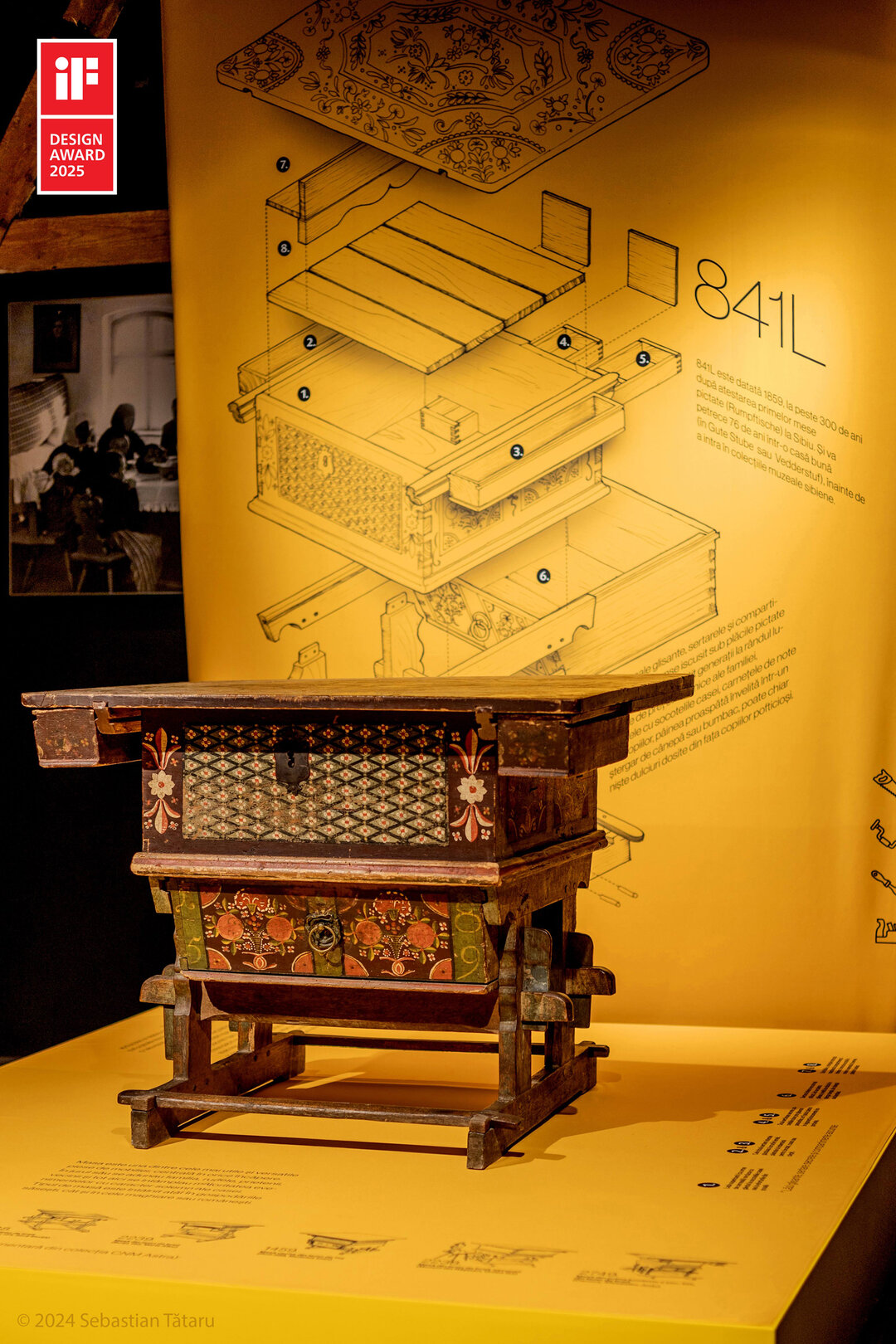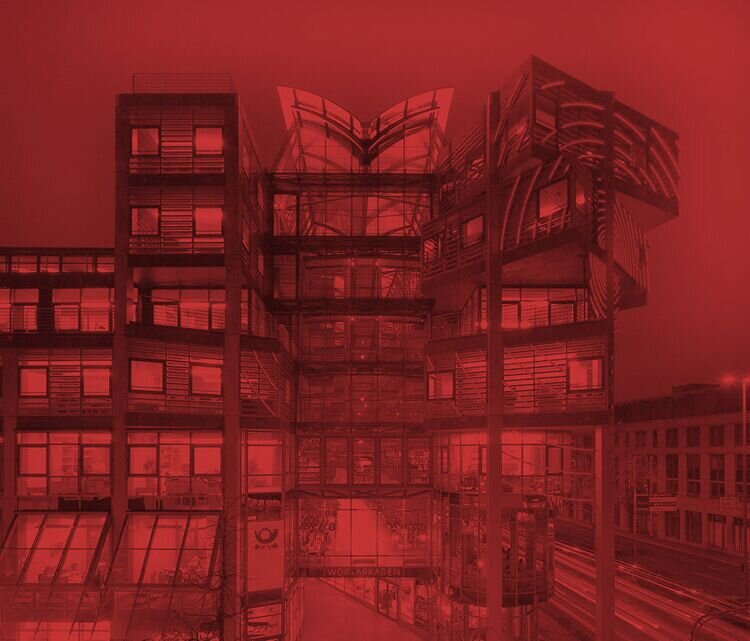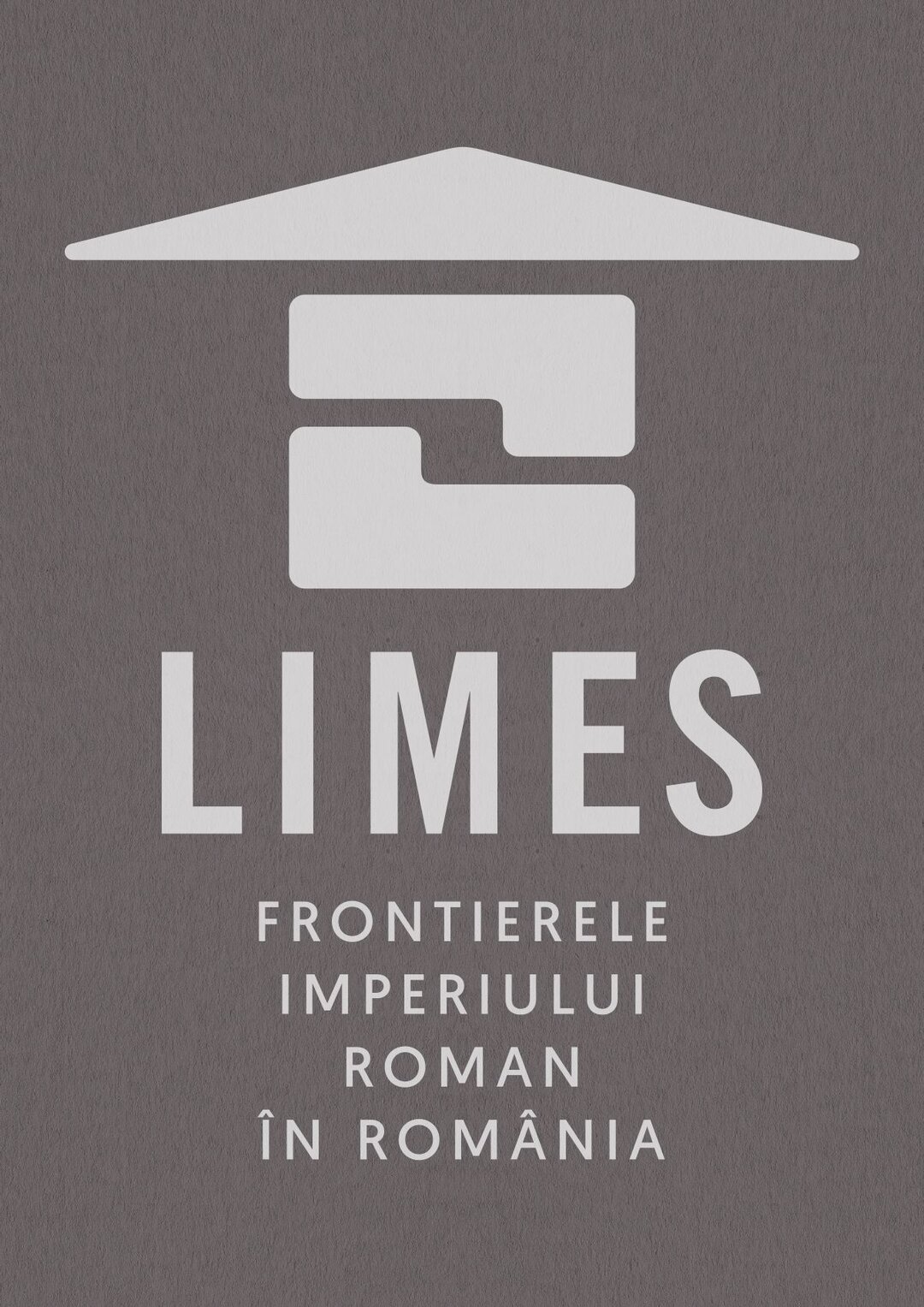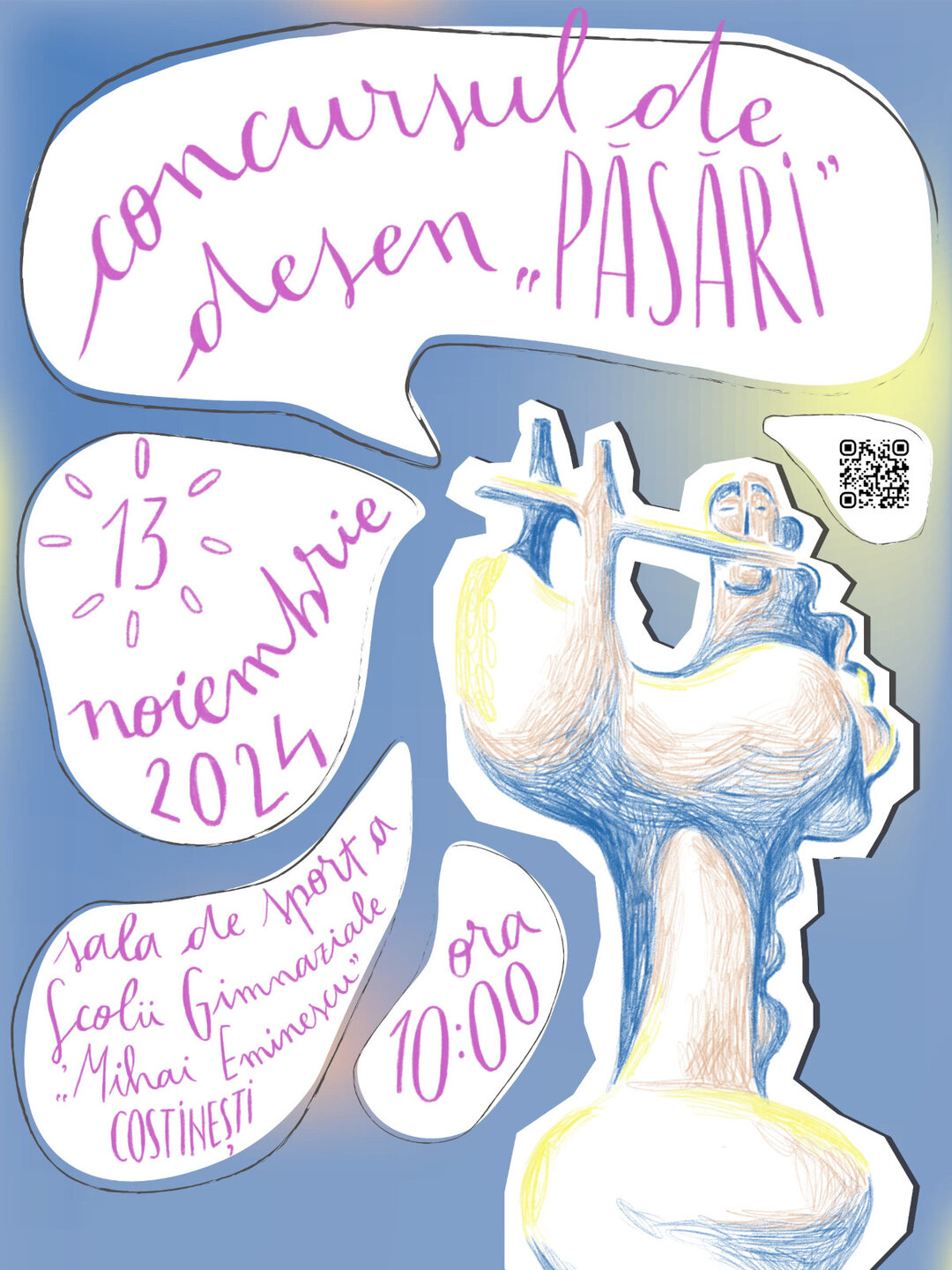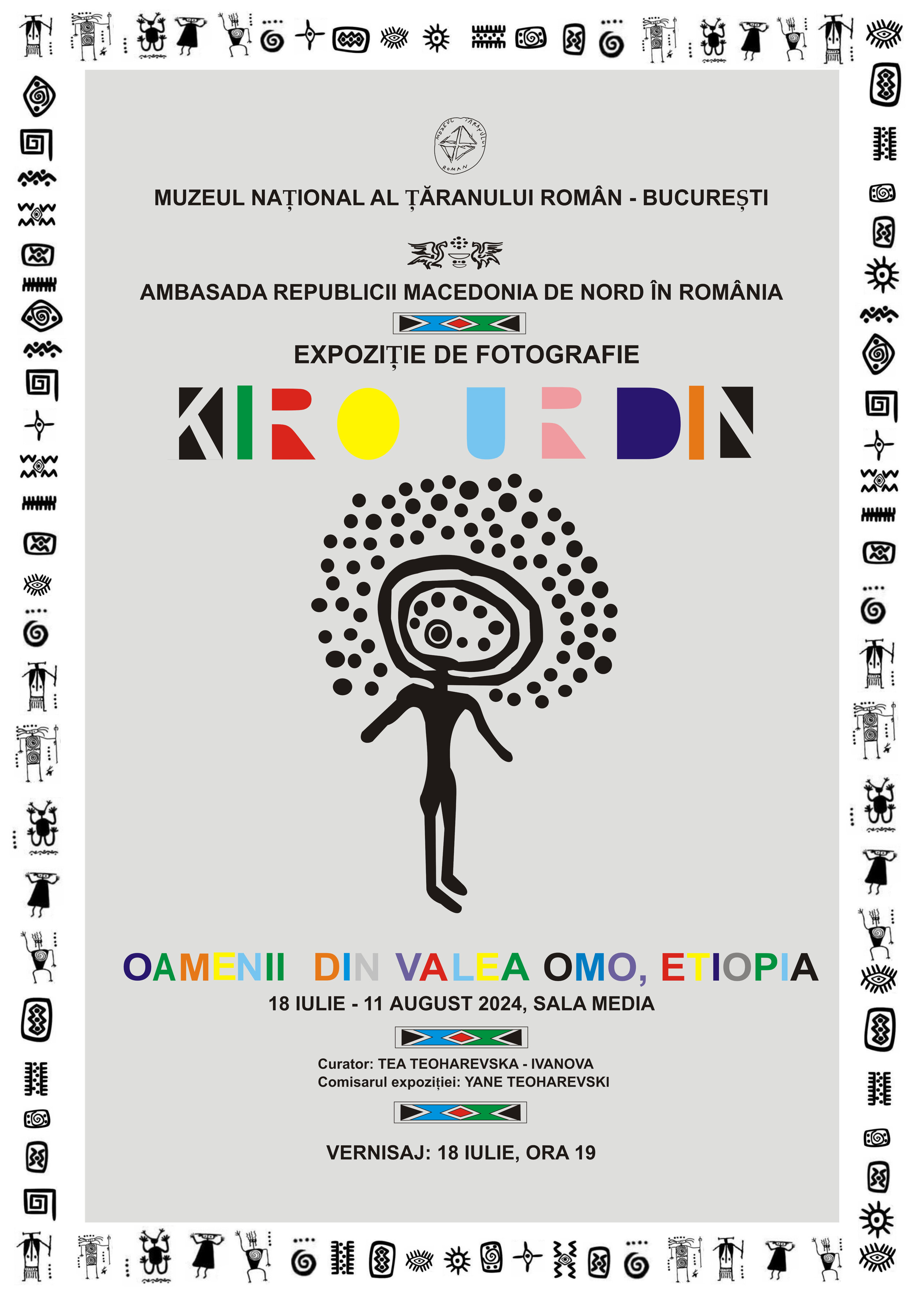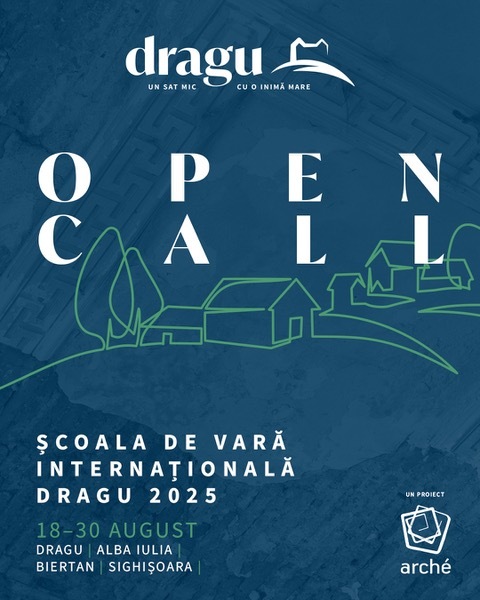
People of the Omo Valley, Ethiopia
Photography exhibition by Kiro Urdin July 18 - August 11, 2024, Media Hall of the National Peasant Museum

10.07.2024
TheEmbassy of the Republic of North Macedonia in Romania, in partnership with the National Museum of the Romanian Peasant, awaits you on Thursday, July 18, 2024, at 7 p.m., at the Media Hall, for the opening of the photography exhibition by the well-known artist Kiro Urdin, People from the Omo Valley, Ethiopia.
The Omo River in southern Ethiopia is the largest Ethiopian river outside the Nile basin. Its course lies entirely within Ethiopia's borders and flows into Lake Turkana on the border with Kenya. The river basin is renowned for its large number of early hominid fossils and archaeological finds such as early stone tools, which led to its inclusion on the UNESCO World Heritage List in 1980.
Kiro Urdin (North Macedonia, France) studied art and cinematography in Paris in the 1970s and has been painting since 1985. He is known for his energetic paintings, which have been exhibited all over the world since 1986 in cities such as Paris, Yokohama, Los Angeles, London, Stockholm, Bratislava. Around the same time, in 1988, Urdin went to New York and Hollywood to pursue his movie ambitions. He directed four films there and continues to direct documentaries and experimental films today. Urdin's work has evolved beyond traditional mediums, such as film and paintings, to include dance, sculpture, literature, photography, philosophy and design. He has published over 15 books, some with his thousands of aphorisms and a book of poetry. Kiro Urdin is also the artistic founder of the Planetarism movement. Planetarism is a movement that encompasses painting, film, dance, video, photography, literature, philosophy and design.
Here you can still find the members of the "tribes": Mursi, Bodi, Kwego, Muguri, Ari, Banna, Hamar, Arbore, Karo, Surma, Dime, Konso... they are still, they are alive. To see and get to know these wonderful members of these ethnic groups is truly a pleasant disturbance to every heart. Some of them have their skin tattooed, others have painted it, and the rich diversity of the applied marks enhance theirbeauty . People with a natural spontaneity, they leave us with the impression that their heart would express itself through smiles and sincere glances, which today is increasingly rare to find, they have nothing to say. They are what they are, here on their own territory, on dry land inhabited by the spirits of their ancestors. The remains discovered are evidence of more than two or three million years of life on this continent. Homo sapiens originated here, as did Lady Lucy. This is where modern man started on his road to progress, and this is where he returns with machines to destroy the evidence of archaeology and the archaeological testament of his soul, burying his own genetic tree forever.(Kiro Urdin)
The exhibition will be on view in the Media Room through August 11, 2024, Wednesday through Sunday, 10:00-18:00.
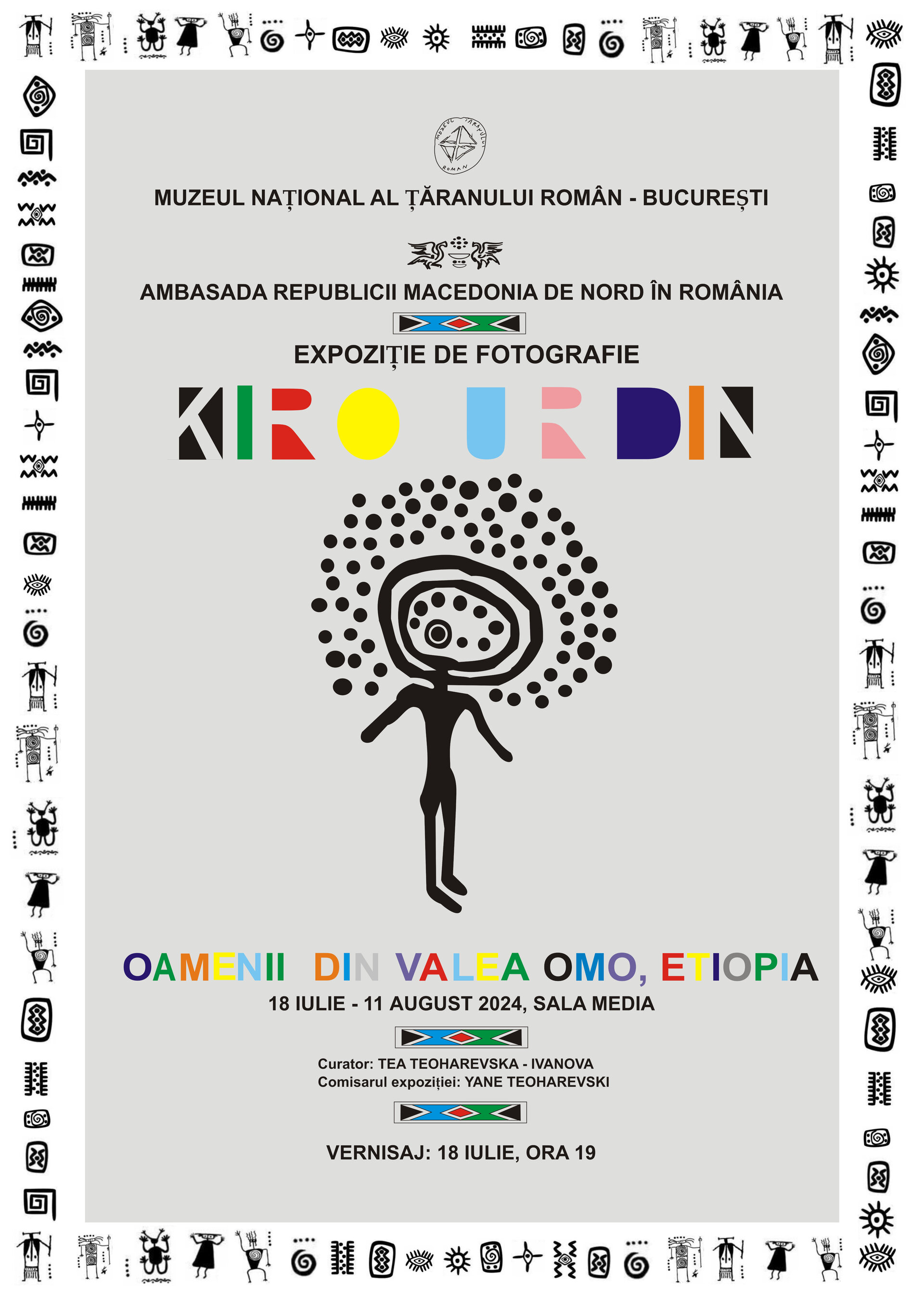
Exhibition curator: Tea Teoharevska-Ivanova
Exhibition curator:The Embassy of the Republic of North Macedonia in Romania, in partnership with the National Museum of the Romanian Peasant, welcomes you on Thursday, July 18, 2024, at 7 p.m., at the Media Hall, for the opening of the photography exhibition by the well-known artist Kiro Urdin, People of the Omo Valley, Ethiopia.
The Omo River in southern Ethiopia is the largest Ethiopian river outside the Nile basin. Its course lies entirely within Ethiopia's borders and flows into Lake Turkana on the border with Kenya. The river basin is renowned for its large number of early hominid fossils and archaeological finds such as early stone tools, which led to its inclusion on the UNESCO World Heritage List in 1980.
Kiro Urdin (North Macedonia, France) studied art and cinematography in Paris in the 1970s and has been painting since 1985. He is known for his energetic paintings, which have been exhibited all over the world since 1986 in cities such as Paris, Yokohama, Los Angeles, London, Stockholm, Bratislava. Around the same time, in 1988, Urdin went to New York and Hollywood to pursue his movie ambitions. He directed four films there and continues to direct documentaries and experimental films today. Urdin's work has evolved beyond traditional mediums, such as film and paintings, to include dance, sculpture, literature, photography, philosophy and design. He has published over 15 books, some with his thousands of aphorisms and a book of poetry. Kiro Urdin is also the artistic founder of the Planetarism movement. Planetarism is a movement that encompasses painting, film, dance, video, photography, literature, philosophy and design.
Here you can still find the members of the "tribes": Mursi, Bodi, Kwego, Muguri, Ari, Banna, Hamar, Arbore, Karo, Surma, Dime, Konso... they are still, they are alive. To see and get to know these wonderful members of these ethnic groups is truly a pleasant disturbance to every heart. Some of them have tattooed skin, others have painted it, and the rich diversity of applied marks adds to their beauty. People with a natural spontaneity, they leave us with the impression that their heart would express itself through smiles and sincere glances, which today is increasingly rare to find, they have nothing to say. They are what they are, here on their own territory, on dry land inhabited by the spirits of their ancestors. The remains discovered are evidence of more than two or three million years of life on this continent. Homo sapiens originated here, as did Lady Lucy. This is where modern man started out on his road to progress, and this is where he returns with machines to destroy the evidence of archaeology and the archaeological testament of his soul, burying his own genetic tree forever. (Kiro Urdin)
The exhibition will be on view in the Media Room through August 11, 2024, Wednesday through Sunday, 10:00-18:00.
Exhibition curator: Tea Teoharevska-Ivanova
Exhibition curator: Jane Teoharevskiy
Organizers: Embassy of the Republic of North Macedonia in Romania, National Museum of the Romanian Peasant
Media partners: Radio Romania, Radio Romania Actualități, Radio Romania Cultural, Radio Romania Cultural, Radio Romania International, RFI Romania, Historia, Igloo, Arhitectura, Observator Cultural, Infinitezimal, Timpul magazine, Lumina newspaper, LiterNet.ro, National Press Agency AGERPRES, spotmedia.ro, www.ordineazilei.ro, www.modernism.ro, propagarta.ro, www.matricea.ro, www.promenada-culturala.ro, www.promenada-culturala.ro, www.daciccool.ro, www.daciccool.ro, www.gokid.ro, www.aiciastat.ro, www.invietraditia.ro, www.accmediachannel.ro, revistapatronatuluiroman.ro, cult-ura.ro, www.iqool.ro, arthood.ro, www.News24.ro, www.qmagazine.ro, visitbucharest.today, zelist.ro



